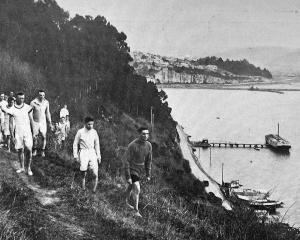
London May 31: Lieutenant Sir Ernest Shackleton is safe at the Falkland Islands.
The Endurance crew is at Elephant Island, between Cape Horn and the South Orkneys. The Daily Chronicle publishes a message, signed "Shackleton'', dated at Port Stanley, Falkland Islands, May 31: - "Have arrived here. The Endurance was crushed in the middle of Weddel Sea on October 27, 1915. We drifted 700 miles with the ice until April 9, 1916, and I left on the 24th, leaving 22 men in a hole in the ice cliffs. I proceeded for help to South Georgia, with five men, in a 22ft boat. At the time of leaving the island all were well, but there is urgent need of a rescue.''
Mr Asquith proposes to ask Parliament to provide funds for the early despatch of a Shackleton relief expedition.
Sir Ernest Shackleton's telegram reached London at midnight, and was immediately communicated to the King, who has taken the deepest interest in the expedition, and also to Lady Shackleton and other relatives of the explorer, who entertained the gravest fears for the party owing to the absence of tidings of the Endurance.
The news was only made known to the public when the late editions of the Daily Chronicle were sold in the streets. The posters created a sensation amongst men and women going to work. Huge editions were eagerly brought up.
The full story of Sir E. Shackleton's journey in a 22ft boat will be eagerly awaited; it will also explain the circumstances necessitating the abandonment or failure of the trans-Polar journey.
News of the safety of Sir E. Shackleton and his five companions will not lessen the public demand that everything possible shall be done on behalf of the men left on Elephant Island, in Ross Sea. The news was received so late that it was impossible to interview explorers, including Sir Douglas Mawson.
•Opossums are not yet protected, though acclimatisation societies have for some time past urged that they should be in districts not mainly devoted to fruit farming.
Mr L. O. H. Tripp, chairman of the Wellington Society, stated last week that, in response to a deputation, he had lately received a reply from the Minister of Internal Affairs in which he acknowledged the possibilities of the industry and the need for placing it on a better basis.
It was hoped now that something would be done, so that the animals might not be ruthlessly exterminated. Mr W. H. Field, M.P., in supporting the chairman's remarks, said that in Southland as many as 80,000 opossums were trapped and killed in one year.
Poachers had already found the value of opossum skins.
- ODT, 2.6.1916.
COPIES OF PICTURE AVAILABLE FROM ODT FRONT OFFICE, LOWER STUART ST, OR WWW.OTAGOIMAGES.CO.NZ












